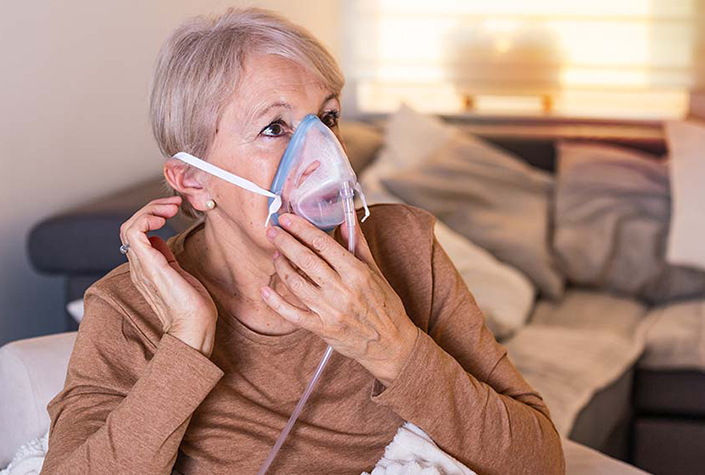Breathing easy: Design improves performance of oxygen concentrators

Anticipating the increased need for better oxygen concentrators as the fight against COVID-19 rages on, researchers at Texas A&M University have laid a computational framework to design the most optimal concentrator to filter ambient air and produce oxygen that can scale with patient demand.
“The COVID-19 pandemic has caused significant stress to our medical and emergency facilities and a surge of people requiring medical attention, and hospitals have a limited number of ventilation equipment,” said Faruque Hasan, associate professor and the Kim McDivitt ’88 and Phillip McDivitt ’87 Endowed Faculty Fellow in the Artie McFerrin Department of Chemical Engineering. “But we could prevent some cases of hospitalization if we designed a more advanced, compact and portable oxygen concentrator that has flexible operating conditions to deliver as much oxygen as the patient requires.”
The researchers noted that oxygen concentrators based on their design would also help those suffering from other respiratory conditions, like chronic obstructive pulmonary disease, pneumonia and asthma.
A description of the study appeared online in the journal Nature Scientific Reports.
Unlike oxygen tanks that provide patients with a continuous supply of pure oxygen, portable oxygen concentrators remove nitrogen from ambient air. The stripping away of nitrogen is due to a process called adsorption, whereby certain species of air molecules get trapped on the surface of solids. Among the many options available for adsorbents, naturally or synthetically made materials known as zeolites act like sieves, holding on to the nitrogen while allowing oxygen to pass through.
But despite their overall advantages, oxygen concentrators are often designed with fixed specifications, thereby limiting their use in meeting oxygen demands caused by a change in a patient’s medical condition or activity. For example, a patient’s oxygen needs could vary both in terms of flow rate and purity, and current oxygen concentrators cannot be used for several different patients within the same hospital setting who require very different ventilation.
“In the ideal case, we need a system that can rapidly switch between different operating regimes for on-demand oxygen production while fulfilling different product specifications,” said Akhil Arora, former graduate student in Hasan’s laboratory and lead author on the study.
To enhance the design of current medical oxygen concentrators, Arora first selected three types of zeolites, LiX, LiLSX and 5A, for his analysis. Next, he ran a physics-based simulation that modeled different properties of the zeolites along with characteristics of the oxygen concentrator, including the size of the adsorption chamber and the different stages within the adsorption process.
Then, using a high-performance computing cluster at Texas A&M University, he varied all these inputs of the simulation simultaneously to arrive at the most optimal operating range that would yield a compact, easy-to-transport and high-performance medical oxygen concentrator. In particular, he found that the LiLSX performed better than LiX and 5A zeolites, producing 90 percent pure oxygen at a high rate. In addition, researchers found the LiLSX-based system could be used to generate different levels of oxygen purity and flow rates.
More from the College of Engineering

